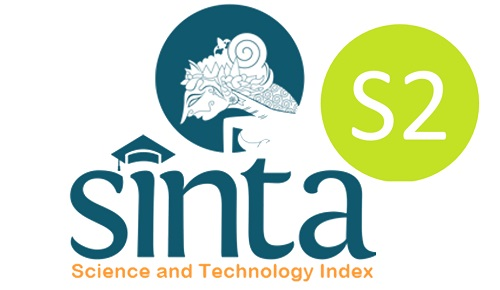THE APPLICATION OF FARS IN A NATIVE SPEAKER OF ENGLISH AND EFL TEXTS
DOI:
https://doi.org/10.22373/ej.v3i1.686Keywords:
FARS rhetoric, anglo-non anglo, writing convention, teaching writing, EFLAbstract
The research shows that in term of frequency of segment relation, the NS’s text shows the dominant use elaborative relation. On the other hand, EFL text predomi-nantly employs List relation which is slightly higher from Causal relation which comes in the second place. The NS text also reveals lower degree of explicitness which is indicated by low occurrence of conjunction realized in unmarked way. Hypotaxis in the NS’s text is almost equal in number as parataxis, and by comparison it has higher number of hypotactic relation compared with the EFL text. On the other hand, EFL text shows higher degree of explicitness, which is identified by higher number of conjunctions employment which is mostly realized in unmarked way. All of these features of text can be linked to the types of texts and linguistic and cultural background of the writers. The NS’s text which predominantly uses elaborative relation can be linked to the writer-responsible theory. This is where the writers have responsibility to make their text become as comprehensible as possible. Elaborative relation is purposed to advance the flow of understanding of the text by readers by providing clarification and other relevant information. Higher number of hypotactic relations can be influenced by Aristotelian argumentation which encourages writers to argue their point of view. Low explicitness in NS’s text reflects the higher English proficiency of the writers in making the text become coherent without heavily relying on conjunction. On the other hand, EFL text uses larger number of List and Causal relations which is expectedly found in an argumentative text. Its higher number of unmarked conjunction indicates the writer’s heavy reliance on conjunction in making the text coherent. The lower degree of hypotactic relation is linked to politeness strategy and keeping harmony following the Confucianism tradition of writing. Consequently, paratactic relation is tended to be used to avoid aggressiveness in presenting a point of view.Downloads
References
References
Adams, T. (2003). Becoming cultured: Your exploration of intercultural communication can help you realize dramatic influence of culture on patient communication, RDH, 23(8), August, 40-48. Retrieved June 23, 2016, <http://www.rdhmag.com/display_article/184780/56/none/none/Feat/Becoming-Cultured>.
Dahl, T. (2004). Textual metadiscourse in research article: A marker of national culture or of academic discipline? Journal of Pragmatics, 36(10), 1807-1825.
DeCapua, A., & Wintergerst, A. C. (2004), Crossing cultures in the language classroom. Michigan: The University of Michigan Press.
Golebiowsky, Z. (1998). Rhetorical approaches to scientific writing: An English-Polish contrastive study. Text, 18(1), 67-102.
Golebiowski, Z. (2004). Description of FARS relational clusters and definitions of relations. Deakin University.
Golebiowski, Z. (2006). The distribution of discoursal salience in research papers: relational hypotaxis and parataxis. Discourse Studies, 8(2), 259-78, retrieved 12 June 2016, Sage Premiere database.
Golebiowski, Z., & Liddicoat, A. J. (2002). The interaction of discipline and culture in academic writing. Australian Review of Applied Linguistic, 25(2), 59-71.
Hinkel, E. (Ed.) (2009). Culture in second language teaching and learning. New York: Cambridge University Press.
Kaplan, R. B. (1988). Contrastive rhetoric and second language learning: notes towards theory of contrastive rhetoric. In A. C. Purves (Ed.), Writing across language and cultures: issue in contrastive rhetoric, (pp. 275-304). The U.S.A.: SAGE Publications.
Liao, M. T. & Chen, C. H. (2009). Rhetorical strategies in Chinese and English: a comparison of L1 composition textbooks. Foreign Language Annals, 42(4), 695-720.
Mann, W. C., Matthiessen, C. M. I. M., & Thompson, S. A. (1992). Rethorical structure theory and text analysis. In W. C. Mann & S. A. Thompson (Eds.), Discourse Description: Diverse Linguistic Analyses of a Fund-raising Text (pp. ix-ixx, 39-78). Amstermdam: John Benjamins.
Paltridge, B. (2006). Discourse Analysis. London: Continuum
Shokouhi, H. & Baghsiahi, A. T. (2009). Metadiscourse function in English and Persian sociology article: a study in contrastive rhetoric. Poznań Studies in Contemporary Linguistics, 45(4), 549-568.
Swales, J. (1990). Genre analysis (pp. 110-176). Cambridge University Press.
Downloads
Published
Issue
Section
License
Proposed Policy for Journals That Offer Open Access
Authors who publish with Englisia journal agree to the following terms:
- Authors retain copyright and grant the journal right of first publication with the work simultaneously licensed under a Creative Commons Attribution License that allows others to share the work with an acknowledgement of the work's authorship and initial publication in this journal.
- Authors are able to enter into separate, additional contractual arrangements for the non-exclusive distribution of the journal's published version of the work (e.g., post it to an institutional repository or publish it in a book), with an acknowledgement of its initial publication in this journal.
- Authors are permitted and encouraged to post their work online (e.g., in institutional repositories or on their website) prior to and during the submission process, as it can lead to productive exchanges, as well as earlier and greater citation of published work (See The Effect of Open Access).









